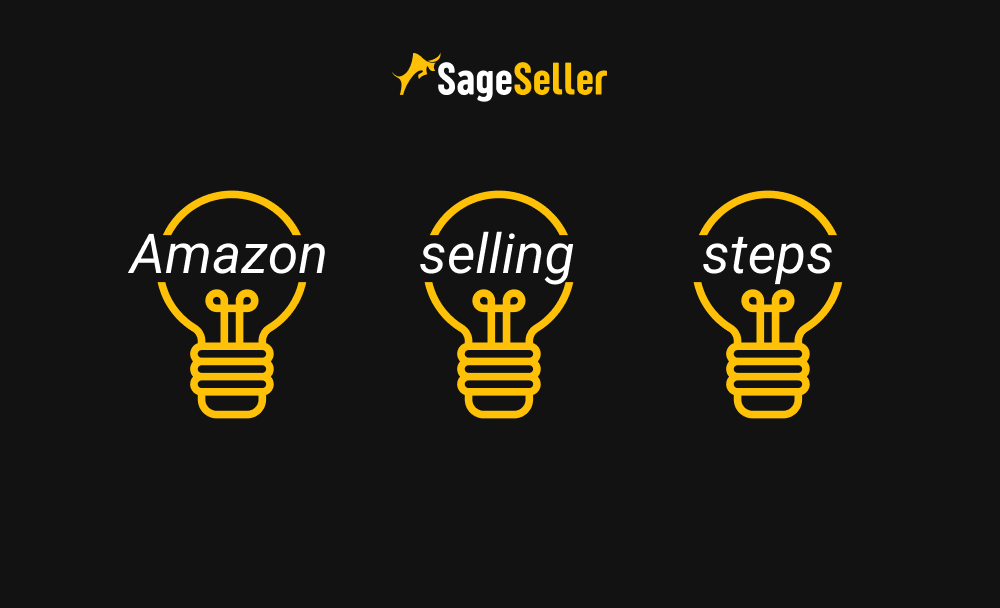If you don’t know how to launch a product on Amazon our guide can help you. Check out these 5 steps and 10 tips to launch a new product on Amazon.
If you’re a newcomer to Amazon, this post will definitely help in launching a product on Amazon the right way. But if you are an experienced Amazon seller, you might think: Okay, is there anything new someone can tell me about how to launch a new product? The truth is, as always, in between. It is yes and no.
If you already know a lot about Amazon product launch, there are always good chances that you missed something out.
You should also keep in mind, that Amazon new product launch is not an ‘American dream’ movie. You have to be persistent and patient to reach success. E-commerce requires ‘SPRA’ approach: Structure, Process, Review, Analyze.
In this post, we’re going to talk about 6 steps to launch a new product, give you tips for creating your best new Amazon product and discuss why people fail on Amazon.
Where to Find a Perfect Product?
The source for great product ideas of Amazon product launching could be a best-seller or trending lists, for instance, those from Alibaba or eBay. Also, you can perform a search through the customer reviews on e-commerce websites, seller, and consumer forums. Consider the products rising in popularity.
Another Amazon launch strategy is to do keyword research and analyze popular keywords. They can give you a hint about which category to target.
Also, look at the competition and product demand. Market analysis is a good tool to catch a trend.
You can do a search on Alibaba, this is a good place to find a manufacturer of items with a good profit margin, as well as Private label products.
Find Your Profitable Niches on Amazon
Every seller would always dream of finding a product with high demand, low competition, and a good margin.One of the ways how to launch a new product on Amazon is to segment the market and find the niche for targeted sales of your product. By doing that you make your product fit for a specific audience, cutting off considerable portion of the competition.
If you want to find your best selling niches on Amazon, you need to do a research and look for good ideas, same way as you do with every product you sell on Amazon. But besides a regular search you need to consider that the product should be intended for a certain target audience. You can, for instance, explore niche communities for good product Ideas, study competition and detect rising trends, or search for the products gaining popularity and filter them by category.
Here are 5 tips to find most profitable Amazon niches.
1. Do a keyword research;
2. Avoid highly seasonal products;
3. Try and find your competitor keywords without videos;
4. Consider the items that have continual demand;
5. Ensure there is a demand for the item.
What are the steps for Amazon product launch?
Step 1. Select a Product
The product choice is your key to success. If you select the wrong product this will kill all your business from the start.
There are 7 simple hints you need to keep in mind when selecting your product.
#1. Avoid Items with High Competition
Too high competition lowers your profitability and gives you less room for maneuver, while too low competition most likely shows that there are not so many potential customers interested to buy the item.
#2. Avoid Oversized, Bulk, Fragile, or Too Heavy Items
Such products require special shipment and might have an additional price tag which would lower your margin.
#3. Avoid Seasonal Items
The products you can sell for Christmas or Halloween will not generate steady income and are in demand only at times. To create long-lasting profit, select products your customers will buy the whole year-round.
#4. Avoid Complex to Manufacture, Difficult to Assemble, Licensed, or Restricted Category Products
Such products can be easily damaged during shipping and can bring up a considerable portion of bad reviews. Make sure that nothing related to your item is a licensed or restricted category.
#5. Select Product with Sufficient Margin
No matter the fulfillment method, FBA or FBM, in both cases Amazon charges you fees. You will have a lot of other expenses for shipment, advertising, etc. Therefore, it is preferable that you do an accurate calculation to take those into account. Normally it is recommended that the fees are not exceeding 35-40%.
#6. Analyze the Marketplace and Market Niche
Do the research of the market and see if the product is in demand at a specific marketplace. In different countries, you can encounter specific habits and tastes, regulations, or restrictions for the trade of different products.
#7. Estimate your Risks
Check financial parameters, see how much your product price is justified. Calculate best- and worst-case scenarios and estimate your startup funds. Normally it is recommended to have a startup capital of $5000 to initiate sales, though the entry fee seems quite low.

Step 2. Ask Yourself: ‘Why Should I Buy this Item’?
#1. Create Your Product Concept
If you cannot convince yourself to purchase your item, others would not buy it either. It should be something new, bright, and bring some added value to the market. It should be something people would need and search for, but not extremely popular, to avoid too much competition.
#2. Outline your Unique Selling Points
Answer a question: 'Why would I buy this product?'. Make bullets. Keep this is mind: you need to convince the shoppers that your product is the best choice. It is preferable that you select your first product considering your scope of interests and experience, something you know much about.
#3. Create a Brand
One of the tools to attract your customers is branding. Brand recognition pushes sales. Create your brand and make sure that your trademark is listed in Amazon Brand Registry.
Step 3. Elaborate on Product Design, Manufacturing, and Logistics
It is very important to find a reliable manufacturer and importer, who can ensure the quality and meet your deadlines. The manufacturer should have production experience and you would prefer that he is English-speaking.
Always get a sample, test it and see if it meets your expectations. Check if the producer is ready to manufacture small amounts. Don’t order too many items from the start.
Check the logistics from the start. Before Amazon product launch you will need to find out a carrier to deliver your products to the Amazon warehouse if you sell FBA, and the cost of shipment to the customer, if you sell FBM. Keep in mind that Amazon charges you around 80 different fees depending on the case. In some cases, you might consider sea freight.
Estimate your inventory. Make a preliminary forecast of your stock. Discuss with the manufacturer the possibility to urgently produce a limited number of items if that is needed.
Step 4. Create a Perfect Product Listing
Product Listing is the ‘face’ of your product, but not only that. You need to include on your listing all the most important product details, helping customers make a purchase decision. The information should be correct, structured, clearly formulated. It’s good to use bullets. You can also include some of the unique selling points.
Remember that listing helps customers to search for your product. Include on the listing the keywords you researched for your item.
It is very important to include an eye-catching title and high-quality images and videos in your listing. Your buyers would very often make a purchase decision based on the picture. Include as many SKUs to each ASIN as you have.
Make sure you’ve attached all descriptions, manuals, etc. The more information you give the customer – the less is the chance for return on a bad review.
And don’t forget about product offers and discounts.
You can get a lot of small tips if you review the recommendations from various Amazon product launch services.
Step 5. Ad Campaigns and Customer Ratings
PPC is an extremely important instrument to increase your reach and conversions. Do your keyword research and analyze top competitors’ keywords, ads, and estimated spend.
Include your target keywords on the product listing and other advertising content.
Don’t forget about Amazon product launch services. Use Sponsored Products Ads, Sponsored Brands Ads, Sponsored Display Ads. For the ad campaigns outside Amazon, for example, on Google or Facebook, you can consider Amazon Influencer Program.
Product reviews and rankings are credibility builders. The shoppers would very often trust the opinion of other people who have already used the product. 84% of shoppers trust online reviews, according to the research. A good number of good reviews helps you gain buyer’s trust in the item you sell. This way reviews influence conversion and sales.
Try to avoid massive negative reviews by giving a clear and detailed description of the product. Ask your customers to leave a review. And even if you get some negative feedback, don’t worry. A product looks more credible if you have some critical comments.
Reviews are not always influencing product ranking, though ratings and reviews push sales. When it comes to ratings, it is recommended to target a minimum of 3.5 stars.
What will Help You Not to Fail on Amazon?
Here are some Dos and Don'ts about how to launch a product on Amazon, to sum up, what we said before and the experience of successful Amazon sellers.
Sales on Amazon is:
#1. All about the Product
Create a product concept and perfect listing. Outline your unique selling points. Convince shoppers to buy your item.
#2. All about Numbers
Accurately calculate all your expenses down to a single penny. You need to ensure that you at least double your invested money. Your product should always have a competitive price and a reasonable margin.
#3. All about Reasonable Strategy
Make it simple and clear. Work it out through all steps and plan everything in advance.
Elaborate advertising strategy based on PPC, researched keywords. Remember that customers buy on Amazon through keywords and phrases and you need to develop this skill to drive traffic to your listing. Create sponsored ads, trademark, and Amazon Brand Registry.
Diversify your sales. Select a number of products and multiple marketplaces.
#4. All about Manufacturing and Logistics
Select a reliable manufacturer and plan your delivery with regard to time and money. Take an informed decision about fulfillment method, FBA or FBM, and consider your stock location. And don’t forget to accurately calculate your Amazon FBA fees, they might burn your profit.
#5. All about Patience and Hard Work
Before starting to sell on Amazon, you need to understand that all those “AMZ gurus” telling you about the “skyrocketing“ or “magic” immediate success of your product is, in most cases, exaggerating. You shouldn’t place false hopes on the easy profit you will get in one instance.
Be patient, know your figures, and don't be afraid of starting your Amazon business!







